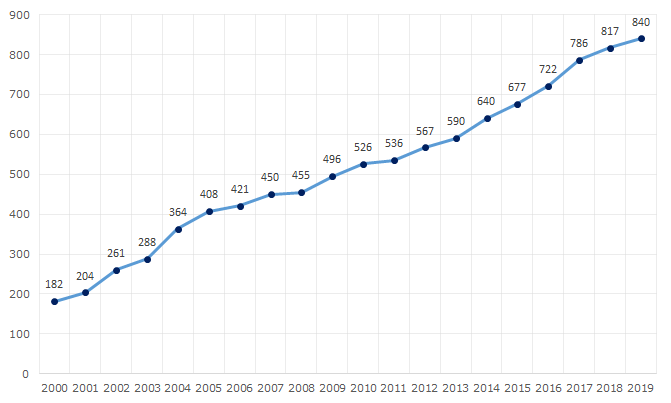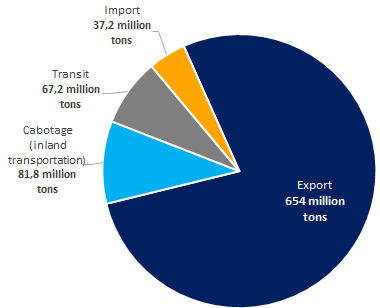Changes in legislation
The Decree of the Government of the Russian Federation as of 16.09.2020 No. 1467, approving the new Provision on licensing the performing of mine-surveying works, will come into force starting from January 1st, 2021.
The activity to be licensed contains the performing of the following works and services:
- creation of mine-surveying reference networks, as well as networks for earth surface movement observation, deformation in mine workings, buildings, facilities and objects while performing works related to mineral resource use;
- spatial and geometric measurements of mine workings and objects, related to mineral resource use, buildings and facilities, determination of its parameters, position and conformity to the project documentation, as well as mining lease status observation;
- recording and reasoning of mine workings scope;
- keeping of the mine graphic documentation.
The full list of types of activities and services to be licensed as well as requirements for both license applicants and license holders are contained in the above-mentioned Provision.
The requirements are: availability of suitable staff members, sole entrepreneurs having a degree in mine-surveying, regulated in-process inspection, equipment for processing of measurements results, measuring instruments and others.
The Federal Service for Environmental, Technological, and Nuclear Supervision (Rostekhnadzor) executes the licensing the performing of mine-surveying works.
A state fee is charged for the issuance or renewal of license.
The Decree will come into force on January 1st, 2021. Particular provisions, concerning supplementary vocational education in the field of industrial safety, will come into force since July 1st, 2021.
The Decree will be valid through 2026.
The users of the Information and Analytical system Globas have access to all the available information (including archive data) about all entities performing mine-surveying works. Currently, more than 2800 companies have licenses for these types of activities.
TOP-10 of the Russian seaports
Compared to the corresponding period of 2019, the cargo turnover of the Russian seaports for January-September 2020 has reduced by 2,7% and amounted to 611,5 million tons. Under the global economic crisis and decline in global trade, the volume of cargo transshipment has decreased for the first time in 24 years.
Since 2000, the cargo turnover of the Russian seaports has increased 4 times, and the highest figure of 840,3 million tons was recorded last year (see Picture 1). For reference, the peak of cargo turnover of all the USSR ports was recorded in 1989 and amounted to 407 million tons.
 Picture 1. Dynamics of the cargo turnover of the Russian seaports, million tons
Picture 1. Dynamics of the cargo turnover of the Russian seaports, million tonsCurrently, there are 67 seaports in Russia. Novorossiysk Commercial Seaport is the largest domestic harbor with 156,8 million tons of the cargo turnover (see Table 1). The second one is Ust-Luga (Leningrad region) seaport handling over 100 million tons of cargo. All Russian goods servicing in the seaports of the Baltic States are forwarded to this port. Recently, the government of the Republic of Belarus declared about plans on forwarding all cargoes from Lithuanian and Latvian seaports to Ust-Luga.
For reference: the largest European seaport – Rotterdam (the Netherlands) – served 469 million tons of cargo in 2018. In 2017, China's Ningbo-Zhoushan, the largest port in the world, handled 1 077 million tons of cargo.
| Rank | Port | Cargo turnover in 2019, million tons | Share, % | Basin |
| 1 | Novorossiysk | 156,8 | 18,7% | Azov-Black Sea |
| 2 | Ust-Luga | 103,9 | 12,4% | Baltic |
| 3 | Vostochniy | 73,5 | 8,7% | Far Eastern |
| 4 | Murmansk | 61,9 | 7,4% | Arctic |
| 5 | Primorsk | 61,0 | 7,3% | Baltic |
| 6 | Big Port of Saint Petersburg | 59,8 | 7,1% | Baltic |
| 7 | Vanino | 31,4 | 3,7% | Far Eastern |
| 8 | Sabetta | 27,7 | 3,3% | Arctic |
| 9 | Nakhodka | 25,6 | 3,0% | Far Eastern |
| 10 | Tuapse | 25,2 | 3,0% | Azov-Black Sea |
| TOP-10 of seaports | 626,8 | 74,6% | - | |
| Total | 840,3 | 100 | - | |
Source: the Federal Agency for Maritime and River Transport, Association of Commercial Seaports; analysis by Credinform
654 million tons or 77,8%, i.e. the majority of cargoes handled in the seaports of Russia is exported (see Picture 2).
 Picture 2. The structure of the cargo traffic in the seaports of Russia in 2019, million tons
Picture 2. The structure of the cargo traffic in the seaports of Russia in 2019, million tonsThe following handled goods prevail in the Russian seaports: crude oil – 276 million tons, coal – 176 million tons, petroleum products (gasoline, oils, fuel oil, etc.) – 150 million tons, breakbulk cargo – 57 million tons (see Picture 3).
 Picture 3. The structure of cargoes handled in the seaports of Russia in 2019, million tons
Picture 3. The structure of cargoes handled in the seaports of Russia in 2019, million tons